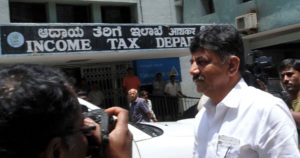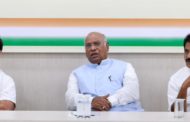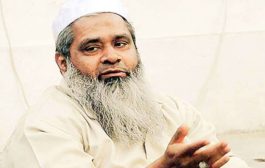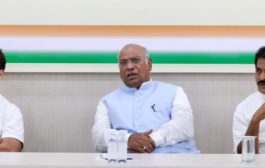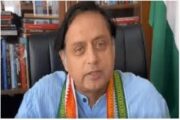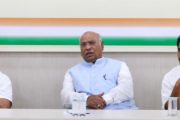On Tuesday, Karnataka’s chief minister HD Kumaraswamy promised to consider making Belagavi (earlier called Belgaum) the ‘second capital’ of Karnataka. With a population of five lakh, Belagavi is 20 kilometres from the border with Maharashtra, 50 kilometres from the border with Goa and 500 kilometres from Bengaluru.
It’s another matter that Belagavi is prominent among the places in Karnataka that Maharashtra lays claim to. It’s yet another matter that BS Yeddyurappa of the BJP made the same promise of making Belagavi the second capital in 2010, when he was the chief minister.
But Kumaraswamy’s latest assurance, and the other noises he has made about developing the backward north Karnataka, have prompted some organisations to call off a bandh they had called on 2 August to demand separate statehood for the region.
The resentment over the neglect of this backward region, which intensified in recent weeks and led to the bandh call, however, continues. The JD(S) and Congress, which are part of the ruling alliance, and BJP are in panic over what this could mean to them as they prepare for the next Lok Sabha election, less than a year away.
And as for the people of north Karnataka and the outfits that called and later cancelled the bandh, they are keeping fingers their crossed over the new promises to bring the region at par with the relatively prosperous south Karnataka. They are giving another chance to another government, aware that similar assurances were either forgotten or fulfilled only halfheartedly in the past. And nobody believes that the status of the second capital alone would guarantee development.
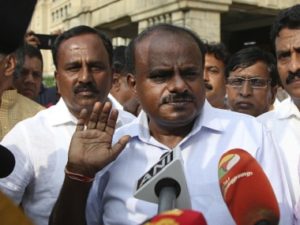
Ballari as second capital?
Kumaraswamy’s talk of a second capital at Belagavi takes me back to a day in 1995 when I accompanied former Chief Justice of India ES Venkataramiah and a few ministers and bureaucrats to a village in Karnataka’s Ballari (earlier called Bellary) district.
“This is where the state can have its second capital,” Venkataramiah told me, pointing at a vast expanse of vacant land from an elevated point. He had many reasons for proposing this. One was that Bengaluru, tucked in the state’s south-east corner, is a bit too far for people in the northern districts. The alternative place in Ballari was almost at the state’s geographical centre where land was available for building a second capital. This idea was primarily aimed at decongesting Bengaluru, from where a whole lot of government departments could be shifted to a second capital. When I reported this in the newspaper where I worked, the government’s response was one of amusement.
Venkataramaiah’s suggestion could have served another purpose. It could have gladdened the hearts of many in north Karnataka, given the region some hope for development and assuaged their feeling of neglect at least to some extent. If HD Deve Gowda, chief minister at the time, had at least promised to look into the idea, which was the result of diligent research by the former Chief Justice, some activists wouldn’t have given the first call for a separate state for north Karnataka in 2000. But they did.
And after the demand was first raised, successive governments took several knee-jerk measures, which include these:
-In 2000, the Congress government of SM Krishna appointed a committee led by economist DM Nanjundappa to look into ‘regional imbalances’ in the state.
-In 2007, five years after the committee submitted its report, Kumaraswamy who was the chief minister and Yeddyurappa, who was the finance minister in the JD(S)-BJP coalition government, began a painfully slow process of implementing some of the recommendations.
-Also in 2007, Kumaraswamy initiated in Belagavi town the project of building Suvarna Vidhana Soudha, a smaller version of Bengaluru’s imposing Vidhana Soudha that houses the state’s secretariat and Legislature.
-In 2008, the Karnataka High Court set up circuit benches in the northern towns of Dharwad and Gulbarga, which were made permanent in 2013.
-Towards the end of 2012, just in time for the Assembly elections the next year, the Congress-led UPA government at the Centre amended Article 371 to grant special benefits to Hyderabad-Karnataka, a part of north Karnataka that is India’s second largest arid region after western Rajasthan. (Under this Article, backward areas in as many as 11 states, including Maharashtra’s Vidarbha and Marathwada, supposedly enjoy special benefits.)
None of these things brought north Karnataka, comprising 13 of the state’s 30 districts, any closer to the rest of the state in development than before. The most worthless of these measures is the Rs 450-crore Suvarna Vidhana Soudha, inaugurated in 2012. This has been used for a Legislature session once a year, with the promise of shifting some departments there remaining only on paper.
Scepticism over separate state
Besides the new promises, there are other reasons why the bandh has been called off. The call for a separate statehood lacks widespread support. Some see sense in the argument that Bengaluru contributes more than 60 percent of the state’s revenues and GDP, and a newly carved north Karnataka state would have little resources to develop itself. They fear that the situation of such a separate state might become like Andhra Pradesh after Telangana and Hyderabad were taken away from it. The voices of Kannada unity also drowned demands for bifurcation.
There are also differences of perspective between north Karnataka’s two regions: Hyderabad-Karnataka, with six districts formerly of the Hyderabad Nizam’s kingdom, and Bombay-Karnataka, with seven districts of the erstwhile Bombay Presidency. The people of Hyderabad-Karnataka, the less developed of the two regions, feel that Bombay-Karnataka corners most of the benefits that should have gone to them.
Congress worst affected
Despite all this, there is unanimity in the entire north over the way successive governments have given the region a cold-shoulder, and this is raising questions over its impact on the next Lok Sabha election. This is because the north-versus-south conflict in Karnataka is also a tug of war between the two dominant upper castes: Lingayats and Vokkaligas. The Lingayats, who dominate the north, have been generally inclined towards BJP and Congress, in that order in the recent past. And the Vokkaligas, who rule the roost in the south, are divided between JD(S) and Congress.
While a regional conflict might help Kumaraswamy consolidate support within his own Vokkaliga community base in the south, Congress is fearful that, as a partner in the ruling alliance, it might bear the brunt of Lingayat anger in the north. And the BJP has been working overtime to prove that it’s the only party that can save the north from doom.
source: Firstpost.com

